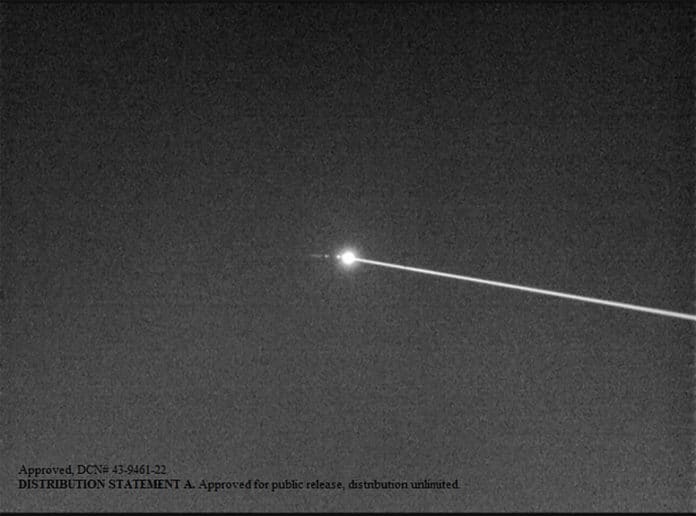The U.S. Navy has announced that it successfully tracked or shot down an aerial target representing a subsonic cruise missile in flight using an all-electric high-energy laser for the first time. The system, known as Lockheed Martin LLD (Layered Laser Defense), is intended for ship equipment, but the test was performed on the ground.
The laser system homed in on the red drone flying by, shooting a high-energy beam invisible to the naked eye against the target, which was successfully neutralized. A parachute then opened as the craft tumbled downward.
The drone shoot-down by the LLD was part of a recent test sponsored by the Office of Naval Research (ONR) at the U.S. Army’s High Energy Laser Systems Test Facility at White Sands Missile Range in New Mexico. The demonstration was a partnership between the U.S. Office of Naval Research (ONR), the Office of the Under Secretary of Defense (Research and Engineering), and Lockheed Martin.
The combat laser, designed and built by Lockheed Martin, can counter unmanned aerial systems and fast-attack boats with a high-power laser – and also use its high-resolution telescope to track in-bound air threats, support combat identification, and conduct a battle damage assessment of engaged targets.
According to the Navy, the system supports a broader effort by the naval research and development community, partnered closely with the fleet, to mature technologies and field a family of laser weapons that can address multiple threats using a range of escalating options. These capabilities range from non-lethal measures, such as optical dazzling and disabling of sensors, to the destruction of a target.
Modern high-power lasers run on electricity, making them inherently safer and able to provide weapon capability as long as a ship has power. This also means the cost per engagement for a laser weapon can be very low since the only consumable item expended is fuel to run the system.
The Navy previously tested the Laser Weapon System aboard the USS Ponce in the Persian Gulf in 2014 and aboard the USS Portland in 2021. Although there’s no plan to field the LLD, it offers a glimpse into the future of laser weapons. It is compact and powerful, yet more efficient than previous systems. It has specialized optics to observe a target and focus laser beams to maximum effect while also incorporating artificial intelligence to improve tracking and targeting.
“The Navy performed similar tests during the 1980s but with chemical-based laser technologies that presented significant logistics barriers for fielding in an operational environment. And, ultimately, those types of lasers did not transition to the fleet or any other Service,” said Dr. Frank Peterkin, ONR’s directed energy portfolio manager.
These most recent LLD tests, however, involve an all-electrical system and offer the Navy to draw from a virtually limitless magazine depth.
